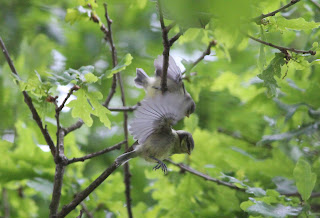Otter-ly Brilliant!

I must have spent so much time out in the Broads lately that Otters now think I am part of the landscape! Let me explain how, for a brief moment today, I became an Otter whisperer. I was out with my new toy (a parabolic microphone) when I bumped, yes literally, bumped into an Otter mum with her three cubs! Here are some of the recordings and a few photos. At first not really knowing whether to keep recording sound or take photos, I ended up doing both, sort of. I edited out where I dropped the microphone to the floor! It was all happening fast and I was trying not to be over excited, so some of the photos are a little blurry (the camera was on the wrong setting initially), and the microphone was not in an ideal position! Was I going to miss the moment? I heard the whistles/squeaks/screams ahead of me, and I wasn't really sure what it was at first, then right in the middle of the path I could see brown shapes wriggling in the long grass. I couldn't believe my luck when the

